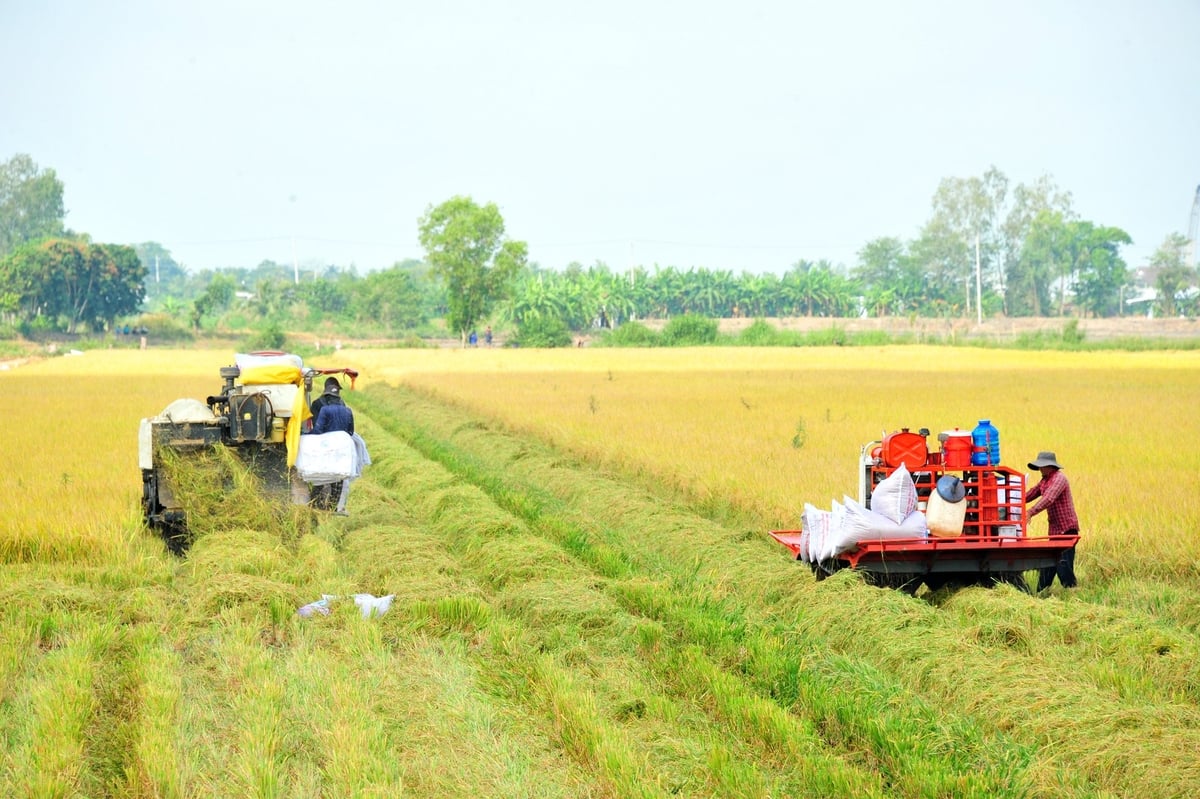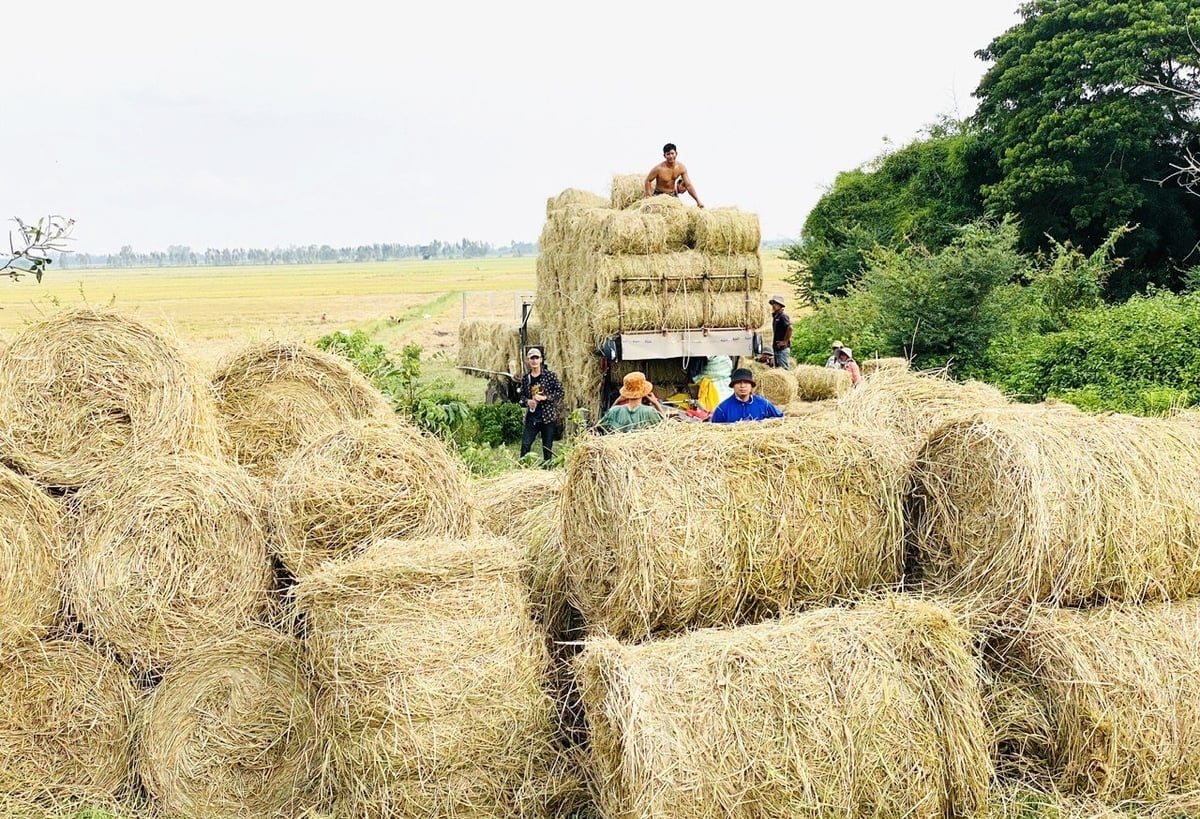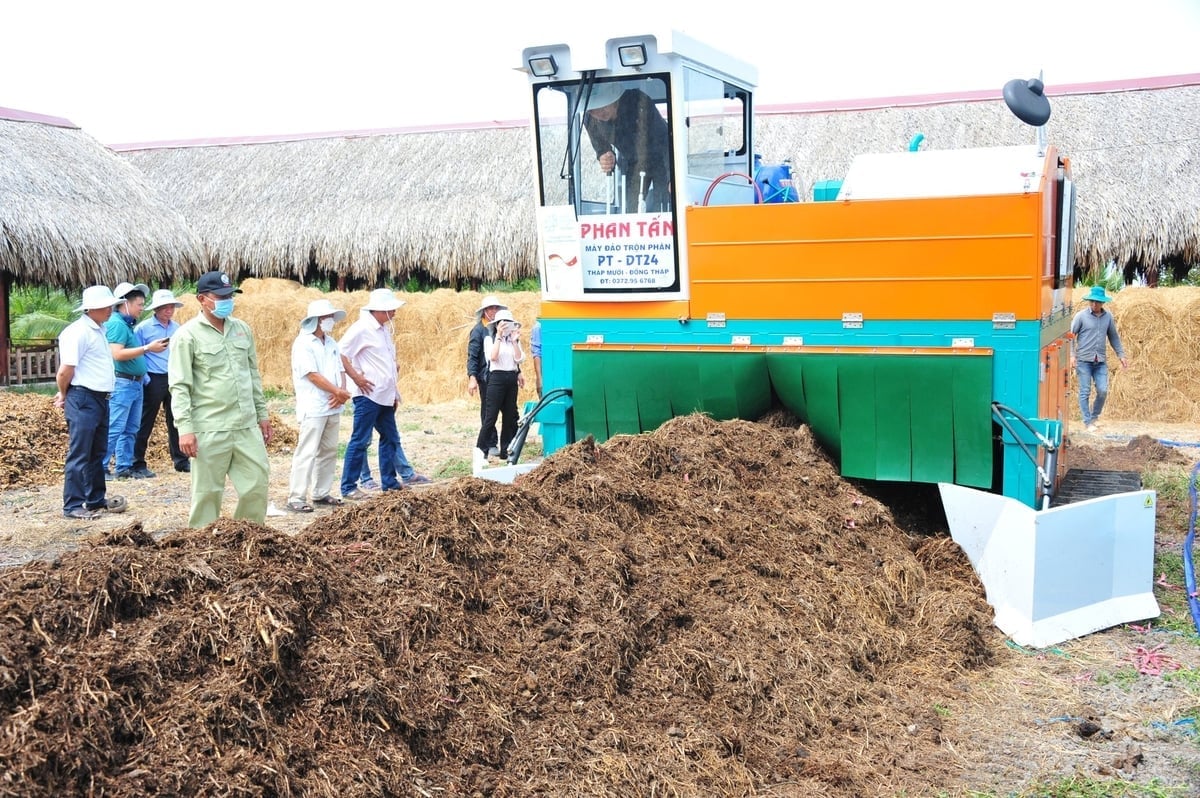November 19, 2025 | 01:30 GMT +7
November 19, 2025 | 01:30 GMT +7
Hotline: 0913.378.918
November 19, 2025 | 01:30 GMT +7
Hotline: 0913.378.918

After each harvest, millions of tons of rice straw are left exposed in the fields across the Mekong Delta. Photo: Le Hoang Vu.
After each harvest, millions of tons of rice straw lie exposed in the fields of the Mekong Delta, with a portion being burned or buried in the paddies. This practice wastes valuable resources and increases greenhouse gas emissions. In the context of the Mekong Delta implementing the project of Sustainable development of one million hectares of high-quality, low-emission rice cultivation associated with green growth in the Mekong Delta by 2030 project linked to green growth by 2030 (One million hectares of high-quality rice project), managing and utilizing rice straw in a circular manner has become an urgent requirement, not only for economic benefits but also for the sustainable future of the rice industry.
Currently, the Mekong Delta produces over 24 million tons of rice annually, accompanied by nearly 25 million tons of rice straw byproducts. However, a large proportion of this straw is still burned or directly buried in flooded fields, releasing greenhouse gases such as methane (CH₄) and nitrous oxide (N₂O) both key contributors to climate change.
Ms. Nguyen Thi Thu Huong, Deputy Director of the Department of Crop Production and Plant Protection, stated that the One million hectares of high-quality rice project aims to collect 100% of post-harvest straw by 2030, processing and reusing it instead of burning or discarding it as in the past. Shifting from traditional straw handling to a circular agriculture model brings many benefits.
Rice straw, rich in organic matter and nutrients, can be used to produce organic fertilizers, animal feed, mushroom cultivation substrates, or biofuel. This not only helps improve soil fertility but also reduces input costs and increases added value from agricultural byproducts.

Currently, rice straw is no longer considered “agricultural waste” but has become a valuable resource when managed effectively. Photo: Le Hoang Vu.
Associate Professor Dr. Nguyen Van Hung, a senior expert at the International Rice Research Institute (IRRI), explains that organic fertilizer derived from rice straw helps enhance soil health and maintain beneficial microbial communities, thereby improving productivity and farming efficiency. However, this must be part of a comprehensive practice package tailored to the weather and ecological conditions of each region.
The interval between the winter-spring and summer-autumn crops in the Mekong Delta is often very short - only about 7 to 10 days. If rice straw is not collected promptly, burning or burying it in the soil can cause organic toxicity, negatively affecting the next crop. The optimal solution is to remove the straw from the fields and process it into useful products.
In Can Tho city, the Tien Dung Cooperative in Co Do district is piloting a mechanized rice straw collection model after harvest during the 2024-2025 winter-spring season. This is a concrete step toward realizing the goals of the One million hectares of high-quality rice project. Meanwhile, in Tan Hung ward (Thot Not district), the New Green Farm Cooperative has achieved early success by reusing rice straw within a circular agricultural value chain.
Mr. Dong Van Canh, Director of New Green Farm Cooperative, shared that the cooperative currently utilizes post-harvest rice straw to cultivate straw mushrooms using both outdoor and indoor models. After mushroom cultivation, the straw is mixed with other byproducts such as rice husk ash, coconut coir, and cow manure to produce organic fertilizer. This product is highly regarded for its quality, helps farmers reduce input costs, increase income, and contributes to environmental protection.

Managing and utilizing rice straw in a circular manner has become an urgent necessity, not only for economic benefits but also for the sustainable future of the rice industry. Photo: Le Hoang Vu.
IRRI and its partners are ready to accompany Vietnam in designing circular production systems, developing technical guideline manuals, and integrating digital technology and data management into the rice production value chain and rice straw processing. In addition, supportive policies for green finance and credit are needed to assist cooperatives, businesses, and farmers in investing in rice straw collection equipment and developing circular economy models.
Rice straw is no longer considered “agricultural waste” but has become a valuable resource when managed effectively. Properly utilizing this byproduct not only reduces emissions and protects the environment but also helps realize the goals of sustainable rice development and green growth in the Mekong Delta region.
Translated by Kieu Chi

(VAN) Deputy Prime Minister Tran Hong Ha convened a meeting with the MAE and relevant agencies to discuss the draft decree on national multidimensional poverty standards for the 2026 - 2030 period.

(VAN) The year 2025 marks the 10th anniversary since more than 190 countries adopted the Paris Agreement on climate change, paving the way for strengthened global action.

(VAN) The PepsiCo Foundation funded the project ‘New Harvest: Sustainable Agriculture Initiative’, focusing on regenerative agriculture and climate change.

(VAN) Dr. Nguyen Viet Hung, ILRI's Regional Director for Asia, emphasized the One Health approach in ensuring food safety and reducing antimicrobial resistance risks in livestock.

(VAN) The youth-driven initiative ‘Innovate for water, act for the future’ seeks practical, scalable solutions to Vietnam’s water challenges.

(VAN) At the Annual Science Conference of Thuyloi University, Deputy Minister Phung Duc Tien directed researchers to focus on in-depth studies, data harmonization, and solutions linked to real-world practice.

(VAN) After nearly four years of implementation, 5,187 community agricultural extension groups have been established nationwide, with 47,493 members participating.